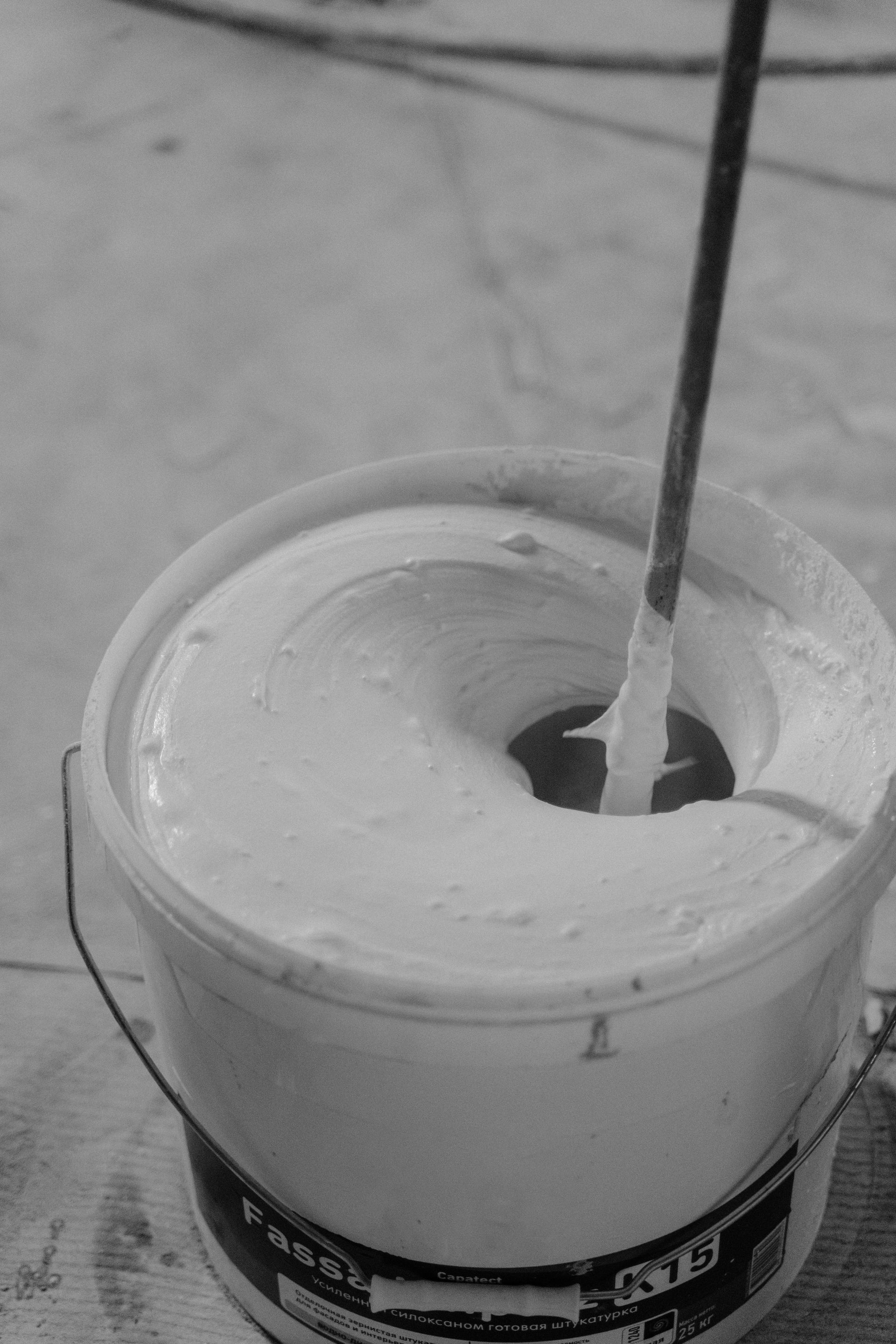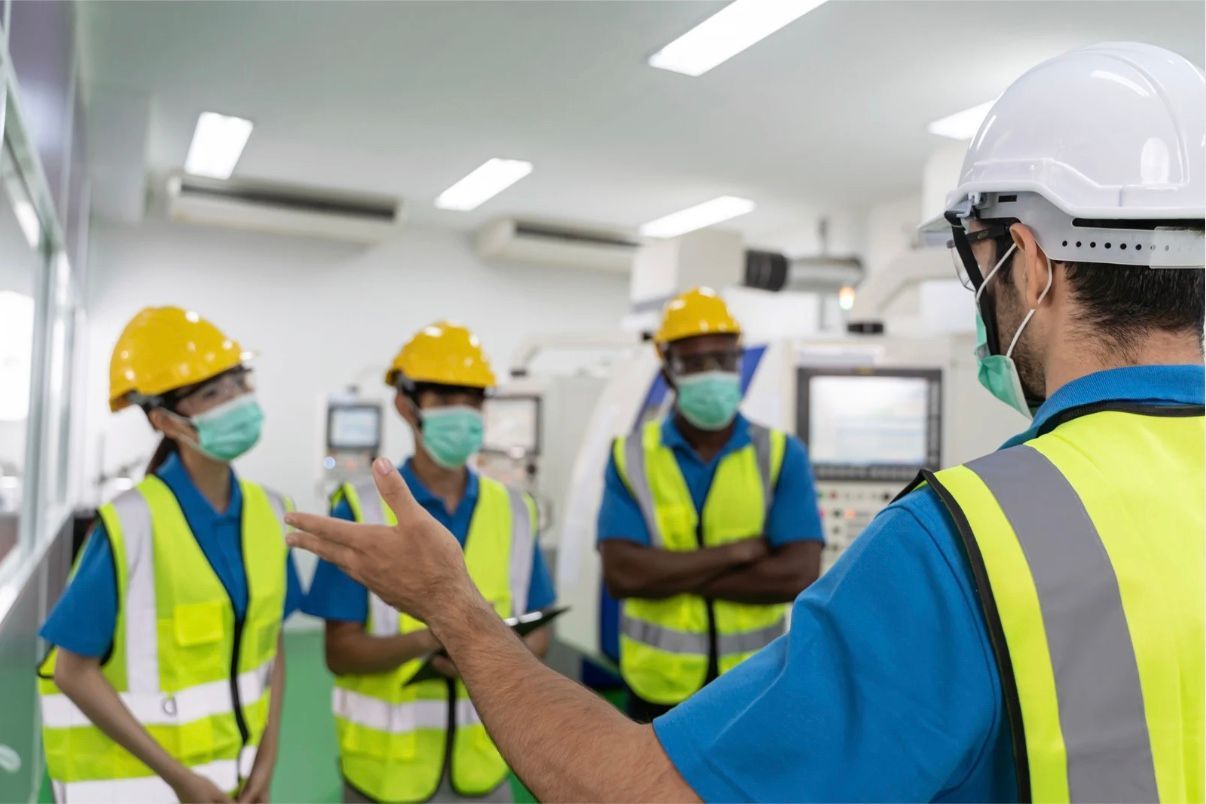Durable Painting

Durable Painting for Industrial Applications: Ensuring Long-Term Durability Through Proper Training
When it comes to protecting large-scale industrial structures, durable painting is essential for ensuring longevity and structural integrity. Whether it’s oil rigs, pipelines, wind turbines, or manufacturing plants, industrial coatings are a vital defence against wear and tear, corrosion, and environmental damage. However, achieving a long term, durable finish requires more than just slapping on any old paint—it demands the right skills, techniques and knowledge, which come from proper training and experience.
At Dangle, we understand the critical role of high-quality, durable painting in industrial applications. We are the exclusive provider of the Train the Painter programme in Northern Ireland, designed to equip both novice and experienced painters with the skills needed to achieve durable finishes in industrial settings. This blog post will delve into the essential industrial painting techniques that ensure durability, highlight the importance of specialised training, and demonstrate how the Train the Painter programme helps technicians master these skills.
The Importance of Durable Painting in Industrial Applications
In industrial settings, durable painting serves multiple purposes that are key to the longevity and safety of the equipment and infrastructure:
Corrosion Protection
Corrosion at sea is one of the most significant threats to the structural integrity of industrial equipment offshore. Factors like moisture, salt, chemicals, and temperature fluctuations can accelerate corrosion, leading to costly repairs and unsafe working conditions. Durable painting creates a protective barrier that helps to prevent corrosion and extend the lifespan of vital industrial assets, whether thats onshore or offshore.
Resistance to Wear and Tear
Industrial environments often involve heavy machinery and equipment subjected to constant use, friction, and physical impact. A durable industrial coating ensures these surfaces can withstand abrasion, impact, and heavy wear while maintaining both their aesthetic and functional properties.
Environmental Protection
Many industrial sites—such as oil rigs, offshore platforms, and power plants—are exposed to harsh weather conditions, UV rays, and airborne pollutants. High-quality industrial coatings offer resistance to these environmental factors, ensuring long-term protection and reducing the frequency of maintenance and repairs.
Improved Aesthetics
While functionality is the primary concern, industrial sites also require a professional appearance. A well-applied, durable painting task enhances the appearance of industrial structures, contributing to workplace pride, customer-facing operations, and an overall positive company image.
Cost-Effectiveness
Durable painting reduces the need for frequent maintenance and reapplication of coatings. While the initial investment in high-quality coatings might be higher, the longevity and protection they provide offer a significant return on investment by reducing long-term repair and upkeep costs.
Techniques for Achieving Durable Painting in Industrial Settings
To ensure a durable and long-lasting paint campaign, it’s essential to follow proper techniques at every stage of the application process. Below, we’ll explore key steps to ensure durable painting results in industrial environments to steel surfaces:
Surface Preparation
Surface preparation is arguably the most critical step in achieving durable paint finishes. The success of any industrial painting project depends on how well the surface is cleaned and prepared before applying paint. Any dirt, rust, old coatings, or oils left on the surface can hinder adhesion, leading to premature paint failure.
- Abrasive Blasting: Often referred to as shotblasting or sandblasting (although sand blasting is illegal in the UK due to health and safety risks from silica sand). The technique uses abrasive materials like shot or steel grit to clean and prepare surfaces. Abrasive blasting is particularly effective for metal surfaces, ensuring that the paint will adhere well and that any rust or contamination is removed.
- Power Washing: Power washing (using high-pressure water at 2500psi to 3500psi) is often sufficient to remove dirt, oil, and old, loosely adherent coatings. It’s a relatively quick and effective method for preparing large areas, although will not provide the steel substrate with a anchor profile where exposed steel exists.
- Chemical Cleaning: In cases where grease, oils, or other stubborn contaminants are present, chemical cleaning agents like AkzoNobels and International Paints Interplus 4101 cleaning gel are used to break down and remove these substances, including light rust. This ensures that the surface is as clean as possible before the painting process begins.
A properly prepared surface allows the paint to bond more effectively, ensuring that the finished product is durable and long-lasting.
Paint Priming Application
Priming is essential for enhancing adhesion between the substrate and the topcoat. A primer acts as a preparatory coating that helps the paint to adhere better and also offers additional protection, such as corrosion resistance through the use of pigments such as zinc.
- Epoxy Primers: These are often used for metal surfaces and offer excellent protection against corrosion. Epoxy primers are highly durable and ideal for use in harsh environments like marine or offshore platforms.
- Zinc-Rich Primers: These primers are ideal for steel surfaces, providing a protective layer against rust and corrosion. They are often used in applications where rust resistance is critical and take the form of sacrificial mitigation.
By selecting the right primer, you ensure that the compatible topcoat, adheres properly and performs optimally over time within the paint system.
Top Coating Paints
The topcoat is the final layer of paint that provides the surface with its primary protective properties. This layer is responsible for offering resistance to wear, corrosion, UV radiation, and environmental elements. Choosing the right type of topcoat is essential for achieving durable painting results.
- Polyurethane Coatings: Known for their exceptional UV resistance and durability, polyurethane coatings are ideal for outdoor industrial applications. These coatings provide a glossy finish that also offers excellent resistance to abrasion and colour retention.
- Epoxy Coatings: Epoxy-based topcoats are highly resistant to chemicals, corrosion, and wear, making them suitable for environments where machinery and equipment are exposed to harsh chemicals or extreme temperatures.
- Acrylic Coatings: Acrylic topcoats are ideal for environments where UV protection and aesthetics are important. They are commonly used in industrial settings exposed to sunlight, as they are resistant to UV degradation and environmental pollutants.
Proper application of the topcoat ensures that the paint performs as expected, providing long-term protection against environmental damage, wear, and corrosion.
Durable Painting Application Methods: Spray Painting vs. Brush and Roll
The method of application can affect the durability and overall quality of the finished paint job. The two most common methods for applying industrial coatings are spray painting and brush-and-roll techniques.
- Spray Painting: Spray painting is the most widely used method for large industrial surfaces. It offers smooth and even coverage and is particularly effective for complex shapes or hard-to-reach areas. Spray painting is faster and provides a uniform finish, making it an excellent choice for industrial environments where large-scale application is required.
- Brush and Roll: While less efficient than spray painting, brush-and-roll methods are ideal for smaller areas, touch-ups, or when a more precise application is needed. However, brush and roll techniques may not always deliver the same level of uniformity as spray painting, which can affect the long-term durability of the finish.
Choosing the correct application method is crucial to achieving durable painting results. For large projects, spray painting typically offers the best coverage and durability.
Paint Curing and Paint Drying
Curing and drying are the final stages of the painting process and are essential for ensuring that the coating achieves maximum durability. While drying refers to the process of the paint solidifying, curing is a chemical reaction that hardens the coating and increases its strength.
Different coatings require different curing conditions, such as specific temperature and humidity levels. Failing to allow the proper curing time or applying paint in unsuitable conditions can result in a coating failures and premature breakdowns.
Allowing the paint to fully cure ensures that the surface achieves optimal resistance to abrasion, corrosion, and environmental elements.
The Role of Training in Achieving Durable Painting
Achieving durable painting results isn’t just about using the right techniques—it’s about having the right skills to apply those techniques correctly. Proper training is essential to ensure that industrial painters can choose the correct materials, apply them appropriately, and follow the necessary safety procedures.
Dangle's Train the Painter programme is designed to equip painters with the knowledge and skills they need to produce high-quality, durable results. By focusing on both the practical and theoretical aspects of industrial painting, our course prepares technicians to work efficiently and effectively, ensuring durable painting outcomes across various industrial applications.
Train the Painter Programme: Dangle's Exclusive Offering
The Train the Painter programme offers hands-on, in-depth training specifically tailored to industrial applications. The course is designed for both novice painters and experienced professionals looking to enhance their skills in durable industrial painting.
The Train the Painter programme covers the following key areas:
- Surface Preparation: Techniques for cleaning, de-greasing, and treating various industrial surfaces to ensure optimal adhesion for coatings.
- Coatings Knowledge: In-depth training on the different types of coatings available and how to choose the right one for each industrial application.
- Application Techniques: Practical training in spray painting, brush application, and roll application to achieve even, durable coatings.
- Health and Safety: Emphasis on safe handling of materials, tools, and equipment, along with the necessary safety protocols when painting in industrial environments.
- Problem-Solving: Training on identifying and resolving common issues in industrial painting, ensuring the longevity and durability of the coatings.
Dangle is a leader in durable painting training for industrial applications. With the Train the Painter programme, we offer unmatched expertise and hands-on experience in the field of industrial painting. Our training helps ensure that technicians are not only skilled in the technical aspects of painting but also understand the importance of selecting the right materials, techniques, and safety protocols to achieve durable, long-lasting results.
Why Choose Dangle’s Academy?
Here at Dangle, we pride ourselves on offering a wide range of professional and comprehensive inspection, access, coatings, and composite (IACC) industrial services and training courses to cater to the needs of both the private and public sectors. Our dedication to providing high-quality work at height solutions and training has helped us establish a strong reputation in the industry.
With a team of highly skilled and experienced professionals, we are committed to delivering exceptional results that not only meet but exceed our clients' expectations. Our on-site working at height services are designed to minimise maintenance costs in the long and short-term, allowing our clients to save on valuable resources.
Located in Belfast, Northern Ireland, our headquarters serve as the centre of our operations across Ireland. However, we also have a Dangle office based in Scotland, ensuring that we can extend our services to a wider clientele across the United Kingdom. No matter where you are located, our team is always ready to assist you with your industrial maintenance or training needs.
If you would like to learn more about how our dedicated team can help you, we encourage you to get in touch with us today. Our friendly and professional staff are always available to provide you with the information and support you require.


